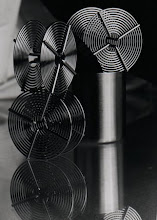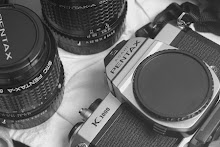
$30, $300 or $3,000?
by John O'Keefe-Odom
After putting myself through the wringer a hundred bazillion times over what to charge for a print, it turned out that the model I use is comparable to what National Geographic charges for a picture.
They'll charge about $5 more for an 11X14; but, theirs is in color; and, hey, it's National Geographic.
I had settled on my pricing model some time ago, but every day is a day when you can feel challenged over where you stand in the grand scheme of things. Is it the price list, or the sales, that's keeping you from your Wall Street fat-kat rooftop party?
Pricing can be an emotional meat grinder for someone getting set for their first sale. These are some considerations I recommend:
How Much Does It Cost To Make The Print Itself?
Add up the price of the materials involved. In black and white, I count the cost of the chemistry, photopaper, negative, packaging, mounting and matting materials.
The cost, as an idea, includes tax, shipping and any fees that you paid along the way. Since everything comes in different units, with different rates of consumption, you may have to do a little figuring to come up with what your material costs are for printing.
This is the cost per print. It's not the cost of the photography.
What Does The Buyer Get For That Price?
The photography, the field and processing time, is the big kick in the gut. There's a lot of overhead there. Ask yourself: do you believe that the person buying the print also bought the photography, the activity, that created it? Yes or no?
If they did, if you believe the answer is "yes," are you also going to provide them with licensing for the print that is comparable to what they would have received if the job had been work for hire?
Since I will not sell the licensing of my prints beyond their immediate display, I charge per print.
At $30, I was once told my prices were so low that my work ought to be displayed not in a gallery, but in the men's room of the gallery. I shot back, "Be sure to put it over the urinal! Just like the sports page, in a bar!"
We were only joking, but I could see my gallery operator's point. Everyone else charges more. Yet, I would submit, that those higher priced plans are based more on the cost of the photography itself.
Those types of plans should also yield, for the purchaser, more bang for their buck. Commercial licensing of a photo, for example, is more expensive than just buying a print.
So, there is one of the main differences.
If you seek to charge someone for your photos, are you selling them the photo or the photo with usage rights? The right to reproduce the image, particularly for commercial applications, will be more expensive.
How Much To Charge For The Photography?
The act of making the photograph itself: how much does this cost? It's more. Often, it'll come in at the cost of about five or six of those common prints, per hour. Which, if you think about it, is roughly the rate at which they would be made, during a productive hour.
What about the other costs? Materials, as they come in. Transportation, as it's used; maybe a charge for transportation time or other standby-type work. Those hours when you are committed to the project, but not actively producing a picture (not "shutter time"), will have their own fee. It's common for this fee per hour to be similar to one print sold, per hour.
One Last Factor: Can You Live With It?
There's a lot of advice out there. There are some good books to read on the subject, and every market will have a different relationship to its services.
The cost of a print is about ten to twenty times more than what a microstock agency will bill for its download. It's also about ten to twenty per cent of what an egregious bill would look like.
As I was pressured sometimes to charge more, per print, it would occur to me: Could my own family have afforded this work?
I found that when the answer was, "No, they could not have bought it," I was already upset and angry with that pricing model anyway. When the answer was yes, I knew that the profitability of the work would often be poor, but that I felt better with what I was offering.
Just my opinion on pricing.
# # #
References:
National Geographic Photo Store.
Ansel Adams photographs, originals and reproductions,
at The Ansel Adams Gallery. http://www.anseladams.com/shoponline.html







thanks for this post. good aspects of pricing to consider.
ReplyDelete